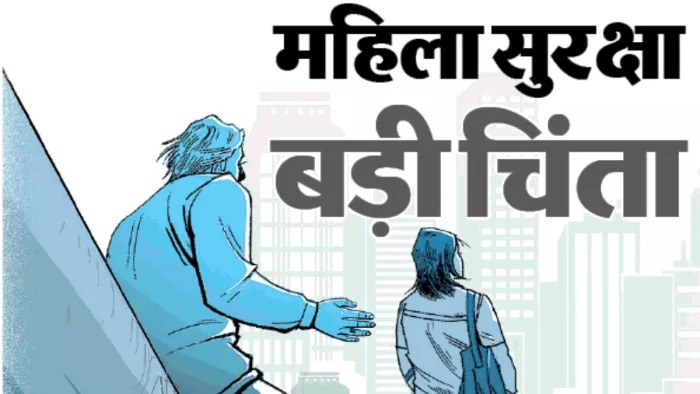
There are strict laws in the country. There are also fast track courts for quick disposal of cases. Literacy has also increased with time. Women have also become cautious about their safety, but all these measures have not been successful in curbing crimes against women. Every day news of crimes against women keep coming. Sometimes from this state, sometimes from that state.
The rape and murder of a trainee doctor in Kolkata has agitated the country. This incident forces us as a country and society to reconsider the inhumanity that happened with Nirbhaya about a decade ago and the steps taken for women's safety after that.
The shameful thing is that when people get angry over cases of crime and rape against women and question the failure of the system, politics starts on it and the issue of women's safety is left behind.
Why as a country and a society we are not able to ensure the safety of women and what still needs to be done about this, is the important issue to be investigated today.
The factors influencing crime against women can be divided into two parts. The first is theoretical factors which can be justified by theory. For example, representation of women in cinema. The second is statistical factors which can be proved with the help of data. For example, the effect of unemployment on crime against women.
Influence of geographical and socio-economic factors
Theoretical factors help us understand the mindset behind the crime as well as the victim's perspective. On the other hand, statistical factors help us understand the path by which we can curb crimes against women.
According to a study in the International Journal of Creative Research Thoughts, crimes against women are influenced by geographical and socio-economic factors.
- Unemployment: Unemployment affects crimes against women on a large scale. If unemployment increases by one percent, then cases of crime against women increase by 45 percent.
- Female labour force participation: Women are at increased risk when they go out to work. This means that crimes against women increase as female labour force participation increases.
- Population density: Densely populated areas in a city tend to be hotbeds of crime, especially crimes against women. Dharavi, a slum in Mumbai, is a perfect example of this.
- Area: If there are not enough policemen in a state with a large area, then maintaining law and order becomes a big challenge. In such a situation, crime increases.
- Poverty: Poverty increases the rate of crime.
- Number of police personnel: The number of police personnel in a police station affects crimes against women. Here the number of women police personnel matters.
Women should raise their voice against atrocities
Instead of keeping silent on atrocities, women should raise their voice against it. Efforts should be made to create awareness among women about their rights. Women should strongly oppose social evils like dowry and female foeticide. Women should also take training in Karate and Taekwondo.
Other causes of violence against women
- In families, boys are given preference over girls right from childhood.
- Women are deprived of health facilities and education.
- In cases of violence against women, the accused is granted amnesty.
- Women not getting support from family and community when they speak out against discrimination and abuse.
- Being less educated, not being financially independent, being unmarried or searching, being in a live-in relationship act as risk factors for domestic violence.
- The portrayal of violence against women in media and cinema promotes aggression against women.
Crimes against women
- In 2022, 4,45,256 cases were registered against women in the country.
- 51 FIRs were registered per hour in cases related to women.
- The rate of crime against women per lakh population was 66.4%
- Charge sheets filed in 75.8% cases
Read More: Punjab: Three miscreants robbed a driver in Ludhiana, fled with 30,000 Canadian dollars.
--Advertisement--

 Priya
Priya Share
Share



